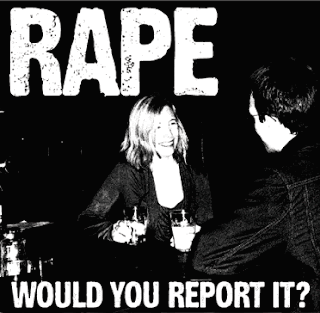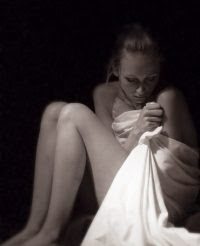Dr. Sandler was born in Brooklyn, New York in the 1940s. She has one sister that is four years older than  her. They weren’t that close until “we were in our fifties, then we got really, really close”. She died five years ago. She lived in the city of Brooklyn but was able to escape in the summers to live on a farm. When her mother was managing her great Uncle’s hotel in the summer, she was able to spend time in the Catskills (an area northwest of New York City, not mountains but rolling hills, plateaus). She loved sports even though she wasn’t really allowed to play them, (“Girls were not supposed to be interested in sports” she says.) She played volleyball at Girl Scout camps she attended.
her. They weren’t that close until “we were in our fifties, then we got really, really close”. She died five years ago. She lived in the city of Brooklyn but was able to escape in the summers to live on a farm. When her mother was managing her great Uncle’s hotel in the summer, she was able to spend time in the Catskills (an area northwest of New York City, not mountains but rolling hills, plateaus). She loved sports even though she wasn’t really allowed to play them, (“Girls were not supposed to be interested in sports” she says.) She played volleyball at Girl Scout camps she attended.
 her. They weren’t that close until “we were in our fifties, then we got really, really close”. She died five years ago. She lived in the city of Brooklyn but was able to escape in the summers to live on a farm. When her mother was managing her great Uncle’s hotel in the summer, she was able to spend time in the Catskills (an area northwest of New York City, not mountains but rolling hills, plateaus). She loved sports even though she wasn’t really allowed to play them, (“Girls were not supposed to be interested in sports” she says.) She played volleyball at Girl Scout camps she attended.
her. They weren’t that close until “we were in our fifties, then we got really, really close”. She died five years ago. She lived in the city of Brooklyn but was able to escape in the summers to live on a farm. When her mother was managing her great Uncle’s hotel in the summer, she was able to spend time in the Catskills (an area northwest of New York City, not mountains but rolling hills, plateaus). She loved sports even though she wasn’t really allowed to play them, (“Girls were not supposed to be interested in sports” she says.) She played volleyball at Girl Scout camps she attended.Dr. Sandler is a busy and active lady, always working for the equality of women. In trying to get a hold of her, she was out of town on business but still made the time to answer my questions. She is a part of many women’s rights club and is always contributing to these foundations. She works to improve awareness of women's issues with her many articles as well as ways to prevent and treat a victim. Her articles include "Friends Raping Friends: Could it happen to you?", "Campus Gang Rape: Party Games?", "Women and Mentoring: Myths and Commandments", etc. She also puts up a tremendous fight to end sex discrimination within a classroom setting and in the work force, more specifically, in higher education. This is known by many with the popular title “The Chilly Climate”.
She helped pass Title IX and filed the first sex discrimination cases against  250 institutions after the amendment was first passed. She is an active expert witness in these cases as well. She has written many articles and two books , "The Chilly Classroom Climate: A guide to Improve the Education of Women" and Sexual Harassment on Campus: A Guide for Administrators". She is currently working on her third, "Peer Sexual Harassment, K-12".
250 institutions after the amendment was first passed. She is an active expert witness in these cases as well. She has written many articles and two books , "The Chilly Classroom Climate: A guide to Improve the Education of Women" and Sexual Harassment on Campus: A Guide for Administrators". She is currently working on her third, "Peer Sexual Harassment, K-12".
 250 institutions after the amendment was first passed. She is an active expert witness in these cases as well. She has written many articles and two books , "The Chilly Classroom Climate: A guide to Improve the Education of Women" and Sexual Harassment on Campus: A Guide for Administrators". She is currently working on her third, "Peer Sexual Harassment, K-12".
250 institutions after the amendment was first passed. She is an active expert witness in these cases as well. She has written many articles and two books , "The Chilly Classroom Climate: A guide to Improve the Education of Women" and Sexual Harassment on Campus: A Guide for Administrators". She is currently working on her third, "Peer Sexual Harassment, K-12".She has been quoted in the New York Times, Time, Newsweek and Sports Illustrated. She has also appeared on talk shows such as The Today Show, Larry King Live and Good Morning America.







 Equal opportunity for men and women means that some of the budgets for male sports teams need to be cut to provide a fund for female sports teams. Women are given equal opportunity to participate in a sport regardless if sports are still gender separated. There has been a lot of controversy because people are complaining with the cutting of funds but in turn it has opened a lot of doors for female athletes.
Equal opportunity for men and women means that some of the budgets for male sports teams need to be cut to provide a fund for female sports teams. Women are given equal opportunity to participate in a sport regardless if sports are still gender separated. There has been a lot of controversy because people are complaining with the cutting of funds but in turn it has opened a lot of doors for female athletes.


 She hates dodge ball because you get hurt.
She hates dodge ball because you get hurt.